Abrolhos Whales continued...
|
Mating:
Male Humpback Whales sing long songs to attract females. Males compete aggressively for females with lunges, tail slashes, charges, and blocks (in which other competing males are furiously pushed away). Mating is a real sport of whales!
We witnessed 2 males competing for one female. This competition can last for hours.
In the picture to the right the dorsal fins of 2 males can be seen. The female has just submerged to the right, her breath still visible.
|
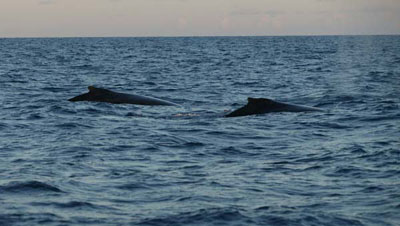 |
It was difficult for us to determine if this was a female or male jumping to the right. All 3 whales submerged and suddenly one of them cleared the water, as can be seen in this picture series. Scientists believe that when males chase and crowd a female, she sometimes jumps out of the water in her effort to get away.
Other times it is the male who jumps, demonstrating his power.
|
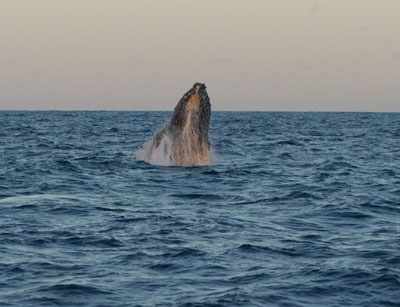 |
As the whale emerges, it rotates it's body, stretching its flippers, displaying the long white underside.
Gestation takes about one year and females give birth to a single calf. Calves remain with their mothers for about one year.
|
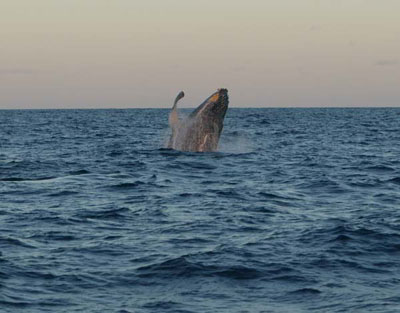 |
|
One whale chasing the other. The left 2 whale bodies are clearly visible. The 3rd whale is jumping out of the water. Possibly the female trying to escape her male suitors? The most persistent male will have a chance to mate with the female.
|
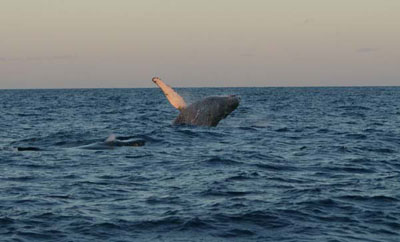 |
Conservation:
Hupback Whales were hunted extensively by commercial whalers in the 20th century, during which time they were reduced to perhaps 10 percent of their original numbers worldwide. Approximately 200,000 Humbpacks were killed in the Southern Hemisphere between 1904 and 1983.
Since the 1970s hard working scientists across the world have initiated programs through their research and negotiating skills to protect Humpback Whales.
|
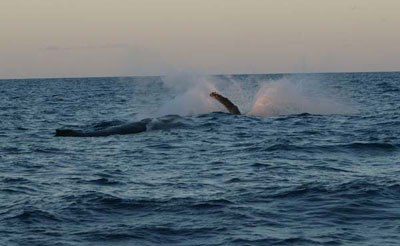 |
Brazil's IBAMA conservation organization, as well as WCS scientists in Africa have launched extensive campaigns that include:
- studying Humback behavior
- photographing whales for identification (a whales tale colors are like a thumb print)
- estimate size of whale populations (whales traveling or breading together)
- forming off-shore parks where whales can breed in safety (such as Abrolhos)
- monitor tourist programs that come to watch the whales
- save and register injured whales
- study whale DNA (whale genetics) and vocalization
|
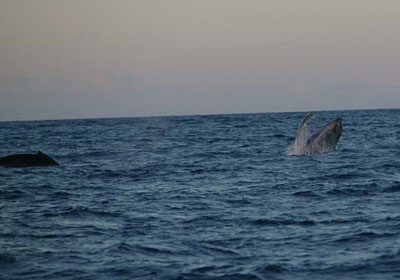 |